-
 Bitcoin
Bitcoin $101,898.5005
-0.75% -
 Ethereum
Ethereum $2,258.1125
-1.07% -
 Tether USDt
Tether USDt $1.0004
0.01% -
 XRP
XRP $2.0178
-2.93% -
 BNB
BNB $624.0243
-1.53% -
 Solana
Solana $134.3298
-0.90% -
 USDC
USDC $0.9999
0.01% -
 TRON
TRON $0.2675
-2.05% -
 Dogecoin
Dogecoin $0.1538
-1.96% -
 Cardano
Cardano $0.5482
-1.11% -
 Hyperliquid
Hyperliquid $35.5636
5.45% -
 Bitcoin Cash
Bitcoin Cash $453.4902
-1.66% -
 Sui
Sui $2.5134
-2.97% -
 UNUS SED LEO
UNUS SED LEO $9.1292
1.77% -
 Chainlink
Chainlink $11.8457
-1.60% -
 Stellar
Stellar $0.2312
-2.73% -
 Avalanche
Avalanche $16.9721
0.29% -
 Toncoin
Toncoin $2.7549
-3.82% -
 Shiba Inu
Shiba Inu $0.0...01081
-1.10% -
 Litecoin
Litecoin $80.8250
-0.71% -
 Hedera
Hedera $0.1374
0.21% -
 Monero
Monero $305.4827
-2.36% -
 Ethena USDe
Ethena USDe $1.0006
0.00% -
 Dai
Dai $1.0000
-0.01% -
 Polkadot
Polkadot $3.2085
-3.12% -
 Bitget Token
Bitget Token $4.0845
-3.13% -
 Uniswap
Uniswap $6.3353
-1.63% -
 Pi
Pi $0.5085
-0.70% -
 Pepe
Pepe $0.0...08913
-3.82% -
 Aave
Aave $232.7090
-0.58%
What does CCI hovering near the 0 axis mean? How to deal with it?
When the CCI hovers near the 0 axis, it indicates market equilibrium, making it challenging for traders to predict the next move due to lack of strong momentum.
May 23, 2025 at 03:28 pm
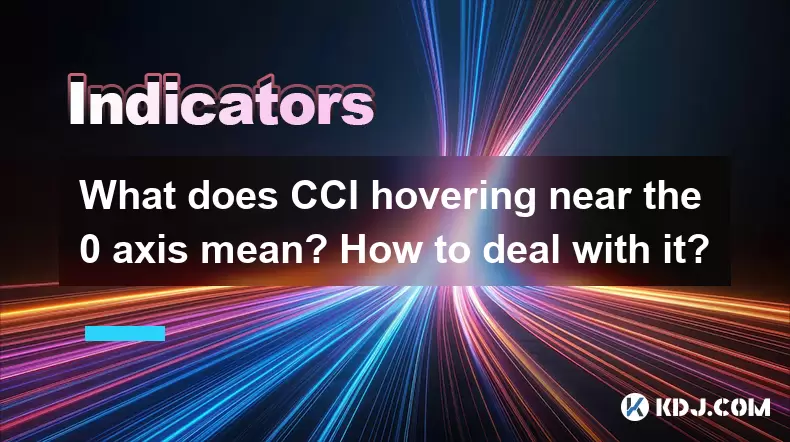
The Commodity Channel Index (CCI) is a versatile indicator used in the cryptocurrency market to gauge the momentum of price action. When the CCI hovers near the 0 axis, it suggests that the market is in a state of equilibrium, where the price is neither overbought nor oversold. This scenario can be challenging for traders as it indicates a lack of strong directional momentum, making it difficult to predict the next move of the market.
Understanding the CCI and the 0 Axis
The CCI is calculated using the typical price of an asset over a specified period, typically 20 days. The formula for the CCI is as follows:
[ \text{CCI} = \frac{\text{Typical Price} - \text{SMA of Typical Price}}{\text{0.015 \times Mean Deviation}} ]
Where:
- Typical Price is the average of the high, low, and closing prices.
- SMA is the Simple Moving Average.
- Mean Deviation is the mean absolute deviation of the typical price from the SMA.
The 0 axis of the CCI represents the mean value of the indicator. When the CCI oscillates around this axis, it signifies that the price is moving in a balanced manner, with no significant deviation from the average.
Implications of CCI Hovering Near the 0 Axis
When the CCI hovers near the 0 axis, it implies that the market is in a consolidation phase. This can be interpreted in several ways:
- Lack of Strong Trend: The market is not showing a clear trend, making it difficult to establish a trading strategy based on momentum.
- Potential Breakout: A period of consolidation often precedes a significant price movement. Traders should be vigilant for signs of a breakout.
- Volatility Contraction: The price movement is confined within a narrow range, which may lead to a subsequent expansion in volatility.
How to Deal with CCI Hovering Near the 0 Axis
Dealing with a CCI that hovers near the 0 axis requires a strategic approach. Here are some methods to navigate this scenario:
1. Wait for a Clear Signal
One of the most straightforward strategies is to wait for the CCI to move away from the 0 axis. A move above +100 indicates an overbought condition, while a move below -100 suggests an oversold condition. Traders can use these levels to initiate trades.
- Monitor the CCI: Keep an eye on the CCI to identify when it breaks out of the neutral zone.
- Confirm with Price Action: Use other technical indicators or price action to confirm the breakout before entering a trade.
2. Use Other Indicators
Combining the CCI with other technical indicators can provide a more comprehensive view of the market. Some useful indicators include:
- Moving Averages: Use moving averages to identify potential trend changes.
- Relative Strength Index (RSI): The RSI can help confirm overbought or oversold conditions.
- Bollinger Bands: These can indicate periods of low volatility, which often precede significant price movements.
3. Implement Range Trading Strategies
When the CCI hovers near the 0 axis, the market is likely in a range-bound state. Traders can capitalize on this by implementing range trading strategies:
- Identify Support and Resistance: Use technical analysis to identify key levels of support and resistance.
- Buy at Support, Sell at Resistance: Enter long positions near support levels and short positions near resistance levels.
- Set Stop-Loss Orders: Place stop-loss orders just outside the identified range to manage risk.
Practical Steps for Trading When CCI Hovers Near the 0 Axis
Here are detailed steps to follow when dealing with a CCI that hovers near the 0 axis:
Analyze the Chart: Begin by analyzing the price chart to understand the current market context.
- Look for patterns such as triangles, rectangles, or flags that indicate consolidation.
- Use trend lines to identify the range within which the price is moving.
Set Up Indicators: Add the CCI to your chart along with other supporting indicators.
- Ensure the CCI period is set to the default 20 days.
- Add moving averages, RSI, and Bollinger Bands for a more comprehensive analysis.
Identify Key Levels: Determine the key support and resistance levels within the current range.
- Use historical price data to find levels where the price has consistently reversed.
- Consider using Fibonacci retracement levels to identify potential support and resistance.
Plan Your Trades: Develop a trading plan based on the identified range and indicators.
- Decide on entry points near support or resistance levels.
- Set clear profit targets and stop-loss levels to manage risk.
Execute Trades: Enter trades according to your plan.
- Buy near support levels and sell near resistance levels.
- Monitor the CCI and other indicators for signs of a breakout.
Monitor and Adjust: Continuously monitor the market and adjust your strategy as needed.
- Be prepared to exit trades if the CCI moves significantly away from the 0 axis.
- Adjust stop-loss and profit targets based on changing market conditions.
Example of Trading with CCI Near the 0 Axis
Consider a scenario where the CCI for Bitcoin (BTC) is oscillating around the 0 axis, and the price is trading within a range of $30,000 to $32,000. Here's how you might approach this situation:
- Identify the Range: Recognize that BTC is moving between $30,000 (support) and $32,000 (resistance).
- Set Up Indicators: Add the CCI, 50-day and 200-day moving averages, RSI, and Bollinger Bands to your chart.
- Plan Trades: Decide to buy near $30,000 and sell near $32,000.
- Execute Trades: Enter a long position at $30,050 with a stop-loss at $29,950 and a profit target at $31,950.
- Monitor and Adjust: Keep an eye on the CCI and other indicators. If the CCI moves above +100 or below -100, consider exiting the trade.
Frequently Asked Questions
Q: Can the CCI be used effectively in highly volatile markets?
A: Yes, the CCI can be effective in volatile markets, but it requires careful interpretation. In such conditions, the CCI may frequently cross the +100 and -100 levels, indicating overbought and oversold conditions. Traders should use shorter time frames and combine the CCI with other indicators to manage the increased volatility.
Q: How often should I check the CCI when it's hovering near the 0 axis?
A: It's advisable to check the CCI at least daily when it's hovering near the 0 axis. However, if you're actively trading within the range, you may need to monitor it more frequently, such as every few hours, to catch potential breakouts or shifts in momentum.
Q: Is the CCI more effective for short-term or long-term trading?
A: The CCI can be effective for both short-term and long-term trading, but it's often more suited to short-term trading due to its sensitivity to price changes. For long-term trading, it's best used in conjunction with other indicators to confirm trends and momentum over extended periods.
Q: Can the CCI be used to predict market reversals?
A: While the CCI can signal potential reversals when it moves from overbought to oversold conditions or vice versa, it should not be used as the sole indicator for predicting reversals. Combining the CCI with other reversal indicators, such as divergence between the CCI and price, can increase the accuracy of predicting market reversals.
Disclaimer:info@kdj.com
The information provided is not trading advice. kdj.com does not assume any responsibility for any investments made based on the information provided in this article. Cryptocurrencies are highly volatile and it is highly recommended that you invest with caution after thorough research!
If you believe that the content used on this website infringes your copyright, please contact us immediately (info@kdj.com) and we will delete it promptly.
- Cryptocurrencies, Coingecko, and Trending Tokens: What's Hot Now?
- 2025-06-23 23:05:12
- Bitcoin, Meerkat, and Onchain Engagement: A New Era of Crypto
- 2025-06-23 23:25:12
- Cloud Mining, Bitcoin, and XRP: A 2025 Perspective
- 2025-06-23 23:25:12
- Neo Pepe Coin: Meme Crypto with Explosive Potential?
- 2025-06-23 23:45:12
- FUNToken: Decoding Past Trends and Getting Started in the Gaming Crypto Sphere
- 2025-06-23 22:25:12
- Eyenovia Goes Crypto: A HYPE Treasury and Potential Rebrand
- 2025-06-23 23:45:12
Related knowledge

Is it contradictory that the moving average system is arranged in a bullish pattern but the DMI shows a decline in trend strength?
Jun 23,2025 at 11:43pm
Understanding the Moving Average and DMI RelationshipIn cryptocurrency trading, technical analysis plays a crucial role in identifying potential trends and making informed decisions. Two of the most commonly used indicators are the Moving Average (MA) and the Directional Movement Index (DMI). While both tools aim to provide insight into market direction...

What is the significance of the gap formed by the gap opening not being filled within five days?
Jun 23,2025 at 09:42pm
Understanding Gaps in Cryptocurrency TradingIn the world of cryptocurrency trading, a gap refers to a situation where the price of an asset jumps from one level to another without any trading activity occurring between those two levels. This often happens over weekends or holidays when the market is closed, and significant news or events occur that impa...
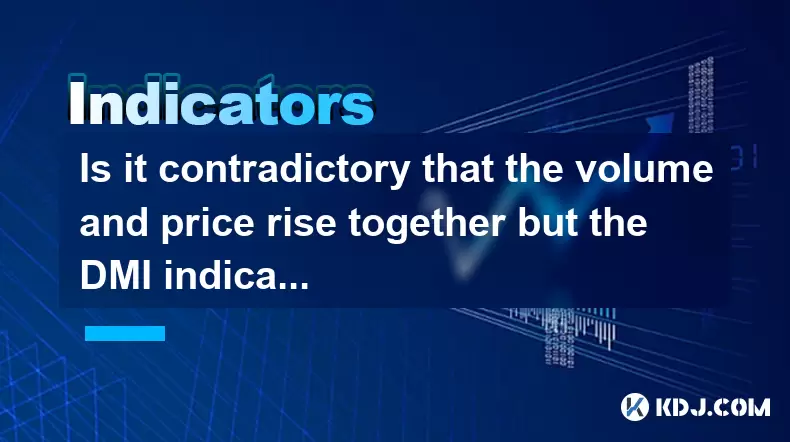
Is it contradictory that the volume and price rise together but the DMI indicator shows that the trend strength decreases?
Jun 24,2025 at 01:00am
Understanding the Relationship Between Volume, Price, and DMIIn the world of cryptocurrency trading, it is common for traders to analyze multiple indicators simultaneously to form a comprehensive view of market conditions. Volume and price are two of the most basic and widely used metrics in technical analysis. When both volume and price rise together, ...
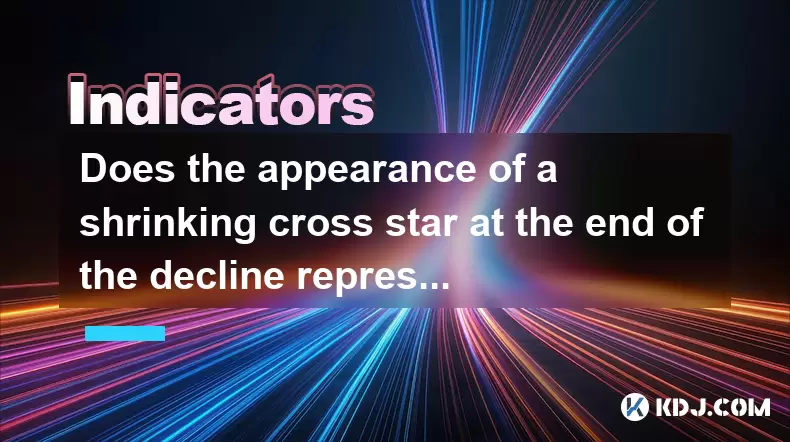
Does the appearance of a shrinking cross star at the end of the decline represent a signal to stop the decline?
Jun 24,2025 at 12:14am
Understanding the Shrinking Cross Star PatternIn the world of cryptocurrency trading, candlestick patterns play a crucial role in technical analysis. One such pattern is the shrinking cross star, which often appears at the end of a downtrend. This pattern consists of a candle with a small body, typically appearing after a series of bearish candles, and ...
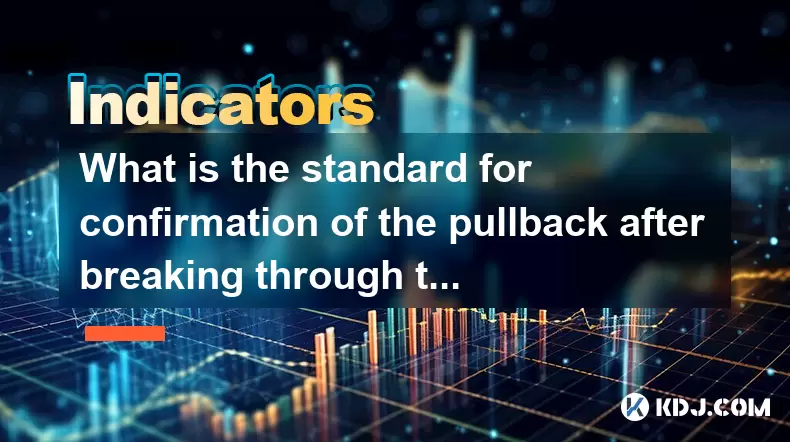
What is the standard for confirmation of the pullback after breaking through the neckline with large volume?
Jun 23,2025 at 11:28pm
Understanding the Neckline in Technical AnalysisIn technical analysis, the neckline is a critical support or resistance level that appears in chart patterns such as head and shoulders, double tops, and double bottoms. It typically connects two or more lows (in the case of a head and shoulders top) or highs (in the case of a head and shoulders bottom). W...
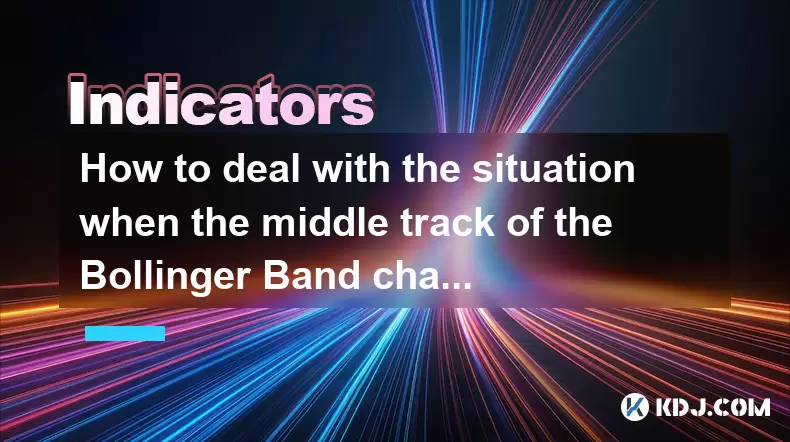
How to deal with the situation when the middle track of the Bollinger Band changes from support to resistance?
Jun 23,2025 at 11:22pm
Understanding the Bollinger Band Middle TrackThe Bollinger Band is a widely used technical indicator in cryptocurrency trading. It consists of three lines: the upper band, the lower band, and the middle track, which is typically a 20-period simple moving average (SMA). Traders often rely on the middle track as a dynamic support or resistance level. Howe...

Is it contradictory that the moving average system is arranged in a bullish pattern but the DMI shows a decline in trend strength?
Jun 23,2025 at 11:43pm
Understanding the Moving Average and DMI RelationshipIn cryptocurrency trading, technical analysis plays a crucial role in identifying potential trends and making informed decisions. Two of the most commonly used indicators are the Moving Average (MA) and the Directional Movement Index (DMI). While both tools aim to provide insight into market direction...

What is the significance of the gap formed by the gap opening not being filled within five days?
Jun 23,2025 at 09:42pm
Understanding Gaps in Cryptocurrency TradingIn the world of cryptocurrency trading, a gap refers to a situation where the price of an asset jumps from one level to another without any trading activity occurring between those two levels. This often happens over weekends or holidays when the market is closed, and significant news or events occur that impa...

Is it contradictory that the volume and price rise together but the DMI indicator shows that the trend strength decreases?
Jun 24,2025 at 01:00am
Understanding the Relationship Between Volume, Price, and DMIIn the world of cryptocurrency trading, it is common for traders to analyze multiple indicators simultaneously to form a comprehensive view of market conditions. Volume and price are two of the most basic and widely used metrics in technical analysis. When both volume and price rise together, ...

Does the appearance of a shrinking cross star at the end of the decline represent a signal to stop the decline?
Jun 24,2025 at 12:14am
Understanding the Shrinking Cross Star PatternIn the world of cryptocurrency trading, candlestick patterns play a crucial role in technical analysis. One such pattern is the shrinking cross star, which often appears at the end of a downtrend. This pattern consists of a candle with a small body, typically appearing after a series of bearish candles, and ...

What is the standard for confirmation of the pullback after breaking through the neckline with large volume?
Jun 23,2025 at 11:28pm
Understanding the Neckline in Technical AnalysisIn technical analysis, the neckline is a critical support or resistance level that appears in chart patterns such as head and shoulders, double tops, and double bottoms. It typically connects two or more lows (in the case of a head and shoulders top) or highs (in the case of a head and shoulders bottom). W...

How to deal with the situation when the middle track of the Bollinger Band changes from support to resistance?
Jun 23,2025 at 11:22pm
Understanding the Bollinger Band Middle TrackThe Bollinger Band is a widely used technical indicator in cryptocurrency trading. It consists of three lines: the upper band, the lower band, and the middle track, which is typically a 20-period simple moving average (SMA). Traders often rely on the middle track as a dynamic support or resistance level. Howe...
See all articles
























































































